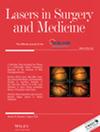Picosecond 532 nm Laser: An Optimal Device for the Reduction of Acquired Agminated Nevi
Abstract
Objectives
Agminated nevi are rare, grouped lesions, which are confined to one anatomic area. Herein, we report a case of successful cosmetic treatment of bilateral, acquired agminated nevi with a picosecond 532 nm Nd:YAG laser device.
Materials and Methods
Literature search was completed on acquired agminated nevi. A healthy 21-year-old woman presented with numerous, grouped 1-mm brown-to-dark brown macules in the axillae bilaterally. Biopsies revealed lentiginous junctional nevi with mild atypia, leading to the diagnosis of agminated nevi. She was referred for laser treatment to improve cosmetic appearance. Two different laser devices were utilized initially, a picosecond 532 nm Nd:YAG laser on the left axilla and a millisecond domain 532 nm laser on the right. Greater improvement was noted with the picosecond 532 nm device. Three additional treatments were completed with the picosecond laser with significant improvement in pigmentation of melanocytic nevi.
Results
Various pigmented and melanocytic lesions have been noted to occur in an agminated pattern although their pathway of development remains unknown. While various devices have demonstrated efficacy for pigmented lesions, treatment of agminated nevi specifically is less reported or established. Our patient's presentation is novel because of the axillary location and bilateral distribution of multiple acquired agminated nevi, neither of which have been previously reported in the literature. We also report successful treatment utilizing a picosecond 532 nm laser. While laser can help improve the cosmetic appearance of pigmented lesions, most lasers do not remove all melanocytes, highlighting the need for close monitoring, as atypia and melanoma have been reported to develop in acquired agminated nevi.
Conclusion
Thus, we present a case of acquired agminated nevi in a novel bilateral distribution in a healthy female successfully treated with a picosecond 532 nm laser.

 求助内容:
求助内容: 应助结果提醒方式:
应助结果提醒方式:


